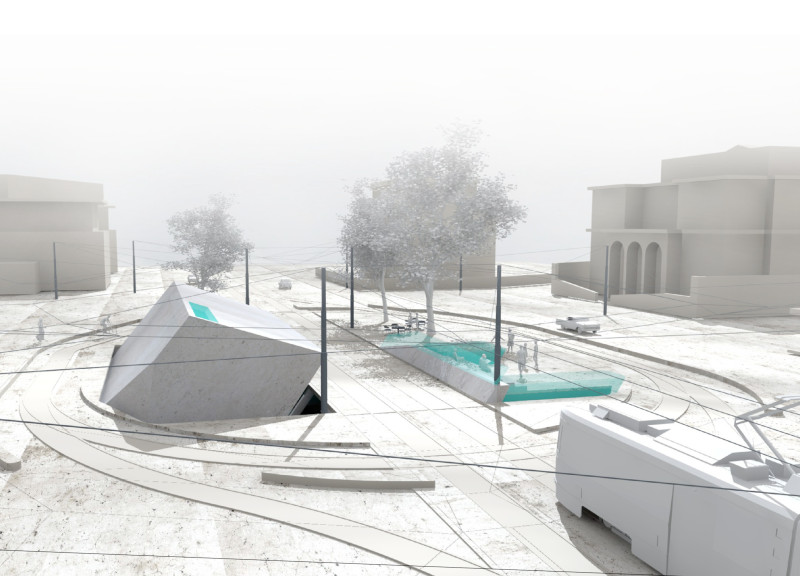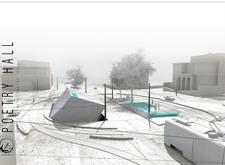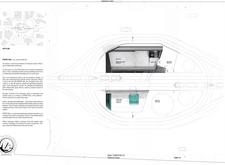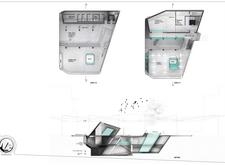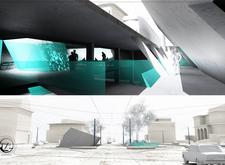5 key facts about this project
From a functional standpoint, Poetry Hall is designed to host a variety of events, ranging from performances and exhibitions to community gatherings. This versatility not only caters to diverse usage but also fosters a vibrant atmosphere that encourages collaboration and creativity among visitors. The architectural form employs a semi-underground layout, which facilitates unique experiential qualities. By partially immersing the space below ground level, the design addresses challenges posed by traditional architectural hierarchies while offering individuals an unexpected interaction with their environment.
One of the standout features of Poetry Hall is its spatial organization that reflects thoughtful planning. The main multi-functional hall interacts seamlessly with the surrounding public spaces, allowing for fluid transitions between indoor and outdoor experiences. Multiple entry points enhance accessibility, encouraging spontaneous use by the public and ensuring that the space functions effectively as a community hub. The emphasis on outdoor areas, including landscaped zones, creates settings for relaxation and social interaction, which further cultivates a sense of belonging within the neighborhood.
The material choices in Poetry Hall exemplify a pragmatic yet thoughtful approach to contemporary architecture. The use of concrete serves as a primary building block, symbolizing durability and strength, which resonates with the historical context of Rome. Additionally, the integration of glass elements plays a critical role in the design. Expansive glass panels promote transparency and connection with the outdoors, inviting natural light into the interior and facilitating a relationship with the surrounding landscape while maintaining comfort for occupants.
Poetry Hall engages visitors not only through its functionality but also through its architectural language. The building's form, characterized by angular geometries and sculptural qualities, blurs the lines between architecture and art. This unconventional design enables the building to stand out within its context, prompting viewers to consider each angle and facet as they navigate the space. Such a sculptural approach fosters a dynamic interaction, enriching the visitor experience while inviting interpretative engagement with the environment.
The uniqueness of the design lies in its philosophical underpinnings that challenge conventional notions of architectural boundaries. By creating spaces that are not solely dedicated to performance or exhibition but also to spontaneous public use, Poetry Hall redefines the role of architecture in urban life. This project not only emphasizes the importance of community and public interaction but also reflects a sensitivity to the environmental context, showcasing how architecture can adapt to new forms of engagement while respecting its historical surroundings.
For readers interested in delving deeper into the architectural design and its intricate details, the presentation of Poetry Hall provides invaluable insights into the architectural plans, sections, and design ideas that inform this innovative project. Exploring these elements will reveal the thoughtful considerations that underpin this architectural endeavor and further highlight its significance within the cultural landscape of Rome.


